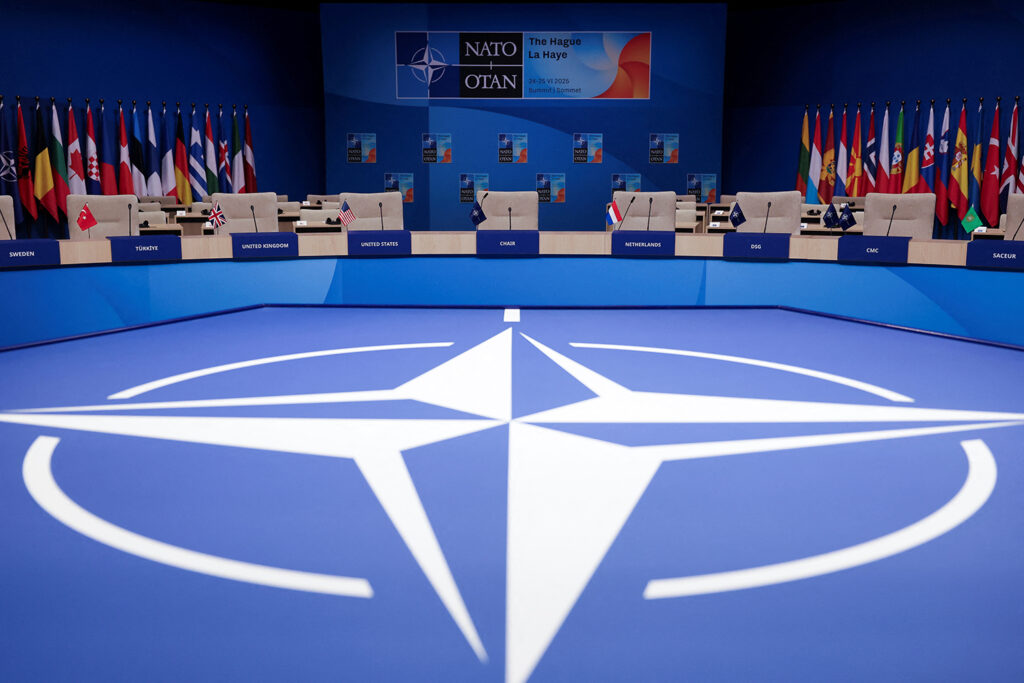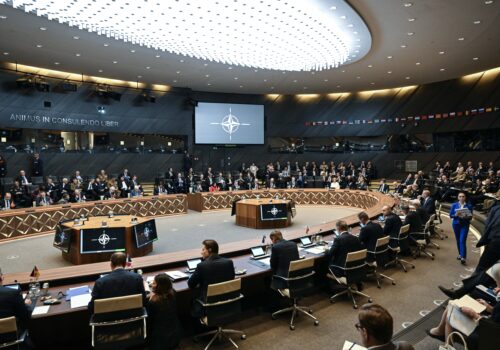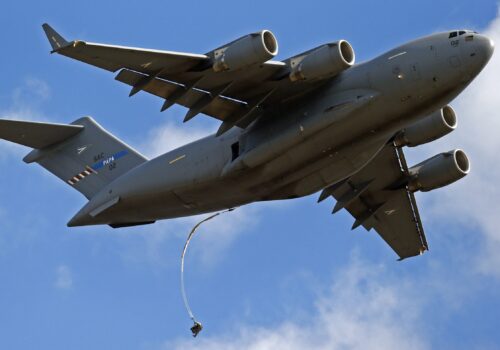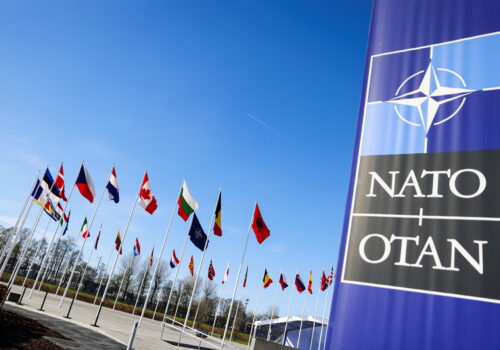The Hague, the administrative capital of the Netherlands and hometown of NATO Secretary General Mark Rutte, will host a summit of Alliance leaders on June 24-25. The summit’s agenda is likely to place the greatest emphasis on increasing defense spending, capabilities, and industrial capacities to build a stronger Alliance over the next decade. Central to these efforts is the anticipated commitment by member states to increase defense spending to an equivalent of 5 percent of gross domestic product (GDP) by 2032.
In fact, these efforts are likely to be the only notable deliverables of this NATO Summit, the agenda for which has been significantly scoped down in order to avoid public strife between US President Donald Trump and other NATO leaders. (For example, the long-planned promulgation of a NATO strategy to counter Russian aggression was scrapped, for this reason.)
As important and overdue as these spending initiatives are, The Hague summit will ultimately be defined by two much more immediate and interrelated issues: The first is what Trump communicates about the United States’ commitment to transatlantic security. The second is what NATO allies, including the United States, do—or fail to do—to ensure Russia’s decisive defeat in its war on Ukraine.
Trump’s second term
Trump’s return to the White House reanimated European fears of a diminishing US commitment to European security. The Hague summit will be Trump’s first major engagement with NATO allies following his second inauguration. Since then, NATO allies have been shaken by Trump’s repeated declaration that Greenland will become a part of the United States, his calls for Canada to become the fifty-first US state, and his statements suggesting the United States wouldn’t come to the defense of allies who spend enough on their militaries.
NATO allies have also been closely tracking the Trump administration’s policy documents, which direct the US military to place greater emphasis on homeland defense, the Western Hemisphere, and the Indo-Pacific. This includes the Interim National Defense Security Guidance issued by Secretary of Defense Pete Hegseth in March, which instructed the US defense establishment to accept increased risk in Europe, a signal of a forthcoming redirection of military capacities to other regional priorities. In April, Hegseth directed the US Army to “realign forces strategically to optimize deterrence and rapid deployment, above all to defend the American homeland and deter China in the Indo-Pacific.” And toward these ends, Hegseth launched a global force posture review that some predict will lead to the reduction of US forces in Europe.
Therefore, it is no surprise that NATO leaders are on edge regarding what Trump will signal at The Hague about the future of US military presence in Europe and the strength of the United States’ commitment to the Alliance.
The war in Ukraine
The issue of greatest urgency at The Hague summit is Russia’s full-scale war against Ukraine. Most European NATO allies believe that failure to defeat Russia’s invasion will likely lead to a wider war in Europe and provoke aggression elsewhere around the world. A prolonged war not only increases the likelihood of Ukraine’s defeat; it erodes the confidence, unity, and credibility of the Alliance.
As The Hague summit begins, Russian President Vladimir Putin appears to be escalating his war on Ukraine and even expanding his demands. In recent weeks, Russia launched its largest barrages of missiles and drones against Ukraine and intensified its ground assaults against Ukrainian positions in Sumy, Donetsk, and Luhansk, among other fronts. Moscow has even escalated its demands against the West, with Russian Deputy Foreign Minister Sergei Ryabkov asserting that the war “won’t end until NATO reduces its military footprint in Eastern Europe,” including in the Baltic states.
Europeans have been taken aback by Trump’s refusal to commit additional assistance to Ukraine and the pressure he has placed on Kyiv to accept Russian demands, including the formal ceding of sovereignty over seized territory and the abandonment of Kyiv’s longstanding goal to join NATO. Perhaps most shocking to European allies was Washington’s temporary cut-off of Kyiv’s access to US intelligence and weapons after a disastrous meeting between Trump and Ukrainian President Volodymyr Zelenskyy in February. Europeans were left wondering whether something similar could happen to them.
NATO’s capacity
The tragedy of this war lies in part in the transatlantic community’s hesitance to exercise its massive overmatch in power over Russia to turn back Russia’s invasion. The collective GDP of NATO allies (some $55 trillion) is over twenty-five times that of Russia (some $2 trillion). Allies spend $1.5 trillion annually on defense compared to Russia’s less than $200 billion. And it is clear what the transatlantic community can and must do to end this war on its terms: increase security assistance to Ukraine, impose crushing economic sanctions on Russia, increase support for Russia’s internal political opposition, and provide Ukraine with a clear path toward membership in the Alliance. These actions are the deliverables that should emerge from The Hague, if not backed by Alliance consensus, then driven forward by a transatlantic coalition of the willing that includes the United States.
Measuring success
When NATO leaders convene in The Hague, as Putin brutally escalates his campaign against Ukraine, what image will the Alliance convey to the world? Will the summit’s actions focus on budgetary and industrial issues whose deliverables will mature only in the next decade? If that is the case, The Hague summit will be remembered as an exercise of looking into the future to avoid the grim realities of the present—the very grim realities for which NATO was established to deter and, when necessary, defeat.
As The Hague summit gets underway, NATO leaders are to be commended for taking long-overdue steps to significantly bolster Canadian and European defense capabilities. But NATO’s relevance and credibility are also determined by the robustness of US security commitment to Europe and the willingness of the Alliance to leverage transatlantic power decisively against the challenge of the day—and that challenge is Russia’s war against Ukraine. Those two factors—not decade-long spending commitments—will determine whether the Hague summit was a success.
Ian Brzezinski is a resident senior fellow with the Scowcroft Center for Strategy and Security and former US deputy secretary of defense for Europe and NATO policy.
Ryan Arick is the associate director of the Transatlantic Security Initiative within the Atlantic Council’s Scowcroft Center for Strategy and Security.
Further reading
Fri, Jun 20, 2025
What counts as ‘defense’ in NATO’s potential 5 percent spending goal?
New Atlanticist By John R. Deni, Ryan Arick
The Alliance must ensure that “defense related” items truly contribute to collective defense as it plans its new, larger spending goal.
Thu, Jun 5, 2025
Immediate steps that Europe can take to enhance its role in NATO defense
Issue Brief By Franklin D. Kramer, Kristen Taylor
As NATO members gather in the Hague amid uncertainty about US commitment to the continent and concerns about Russia’s military rebuilding, what can European nations do to deter and, if necessary, defeat threats from Moscow?
Thu, Jun 5, 2025
What explains the transatlantic rift? It’s all about threat perception.
New Atlanticist By Jason Davidson
NATO allies’ differing threat perceptions provide the backdrop for what could be a contentious summit in The Hague this month.
Image: A view shows the venue of the upcoming NATO summit in The Hague on June 23, 2025. Photo via REUTERS/Christian Hartmann.




